For artist and activist Alice Neel, now recognized as one of the great painters of the 20th century, people were always where you saw the world—its inequalities and cruelties, its joys and hopes—most clearly. She spent her lifetime discovering them: looking closely, listening, and recording the conversation in paint. Painting is a still medium, but Neel’s portraits of friends, lovers, neighbors, and acquaintances are never static. The bold outlines, expressive brushwork, and intensified color that characterize her work capture the drama of self-presentation and the transfer of energy between two people observing each other in a room. Neel used a full palette, alive to the way skin changed color in context—lamplight or full sun, the shade of a chair someone slumped in, or the sweater they’d pulled on that morning.
Race, for Neel, was just one of the aspects that accounted for an individual’s essential difference—something that shaped their bearing, perhaps, but never determined their being. In Alice Neel, Uptown, a new show at David Zwirner curated by Hilton Als, those individuals are the Puerto Ricans, Dominicans, African Americans, and Asians Neel lived alongside in Harlem for 25 years. (In 1962, her building was repossessed for development, so she moved just south of West Harlem, to 300 107th Street, and lived there until her death in 1984.) Neel was an educated, middle-class white woman from Pennsylvania, but privilege had never inured her to others’ pain. By the time she moved to Harlem, Neel had lost her two eldest daughters (one to diphtheria, the other essentially to abduction by Neel’s husband), weathered her share of turbulent relationships, suffered a nervous breakdown, and attempted suicide. Neel moved to Spanish Harlem in 1938 with her lover, musician José Santiago Negrón, to get away from a rarefied, “honky-tonk” clique of other artists in Greenwich Village and closer to the diversity of experience, background, and expression that was, after all, her subject.
Videos by VICE
Read more: For Artist Chantal Joffe, Mothers and Models Are Equally Awkward and Beautiful
Neel’s milieu in Harlem encompassed the politically invisible and the politically active; her portraits from this period include both people who lived in poverty and the writers and activist leaders who criticized it. A woman artist and an intellectual (whose mother once told her, “I don’t know what you expect to do in the world—you’re only a girl”), Neel took on the fight she saw her neighbors in—for freedom, security, and recognition—as her own.
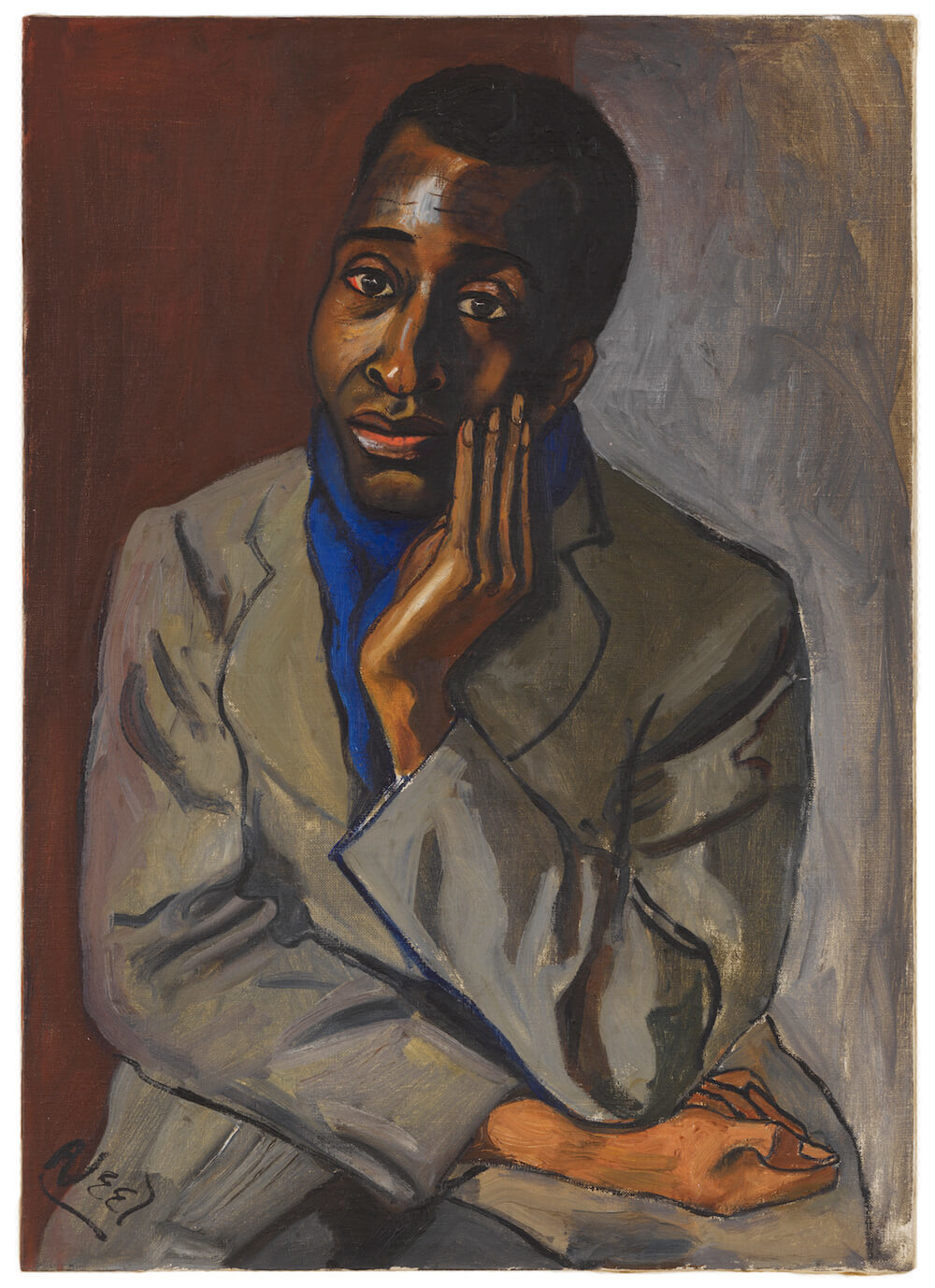
Alice Neel, “Harold Cruse,” 1950. © The Estate of Alice Neel. Courtesy David Zwirner, New York/London and Victoria Miro, London.
Neel talked with her sitters before painting, waiting to begin until the moment in which “they unconsciously assume their most characteristic pose,” a pose that “involves all their character and social standing—what the world has done to them and their retaliation.” The poses in Alice Neel, Uptown are as diverse as the individuals who held them in the artist’s living room over half a century ago. “Pregnant Maria” is languid and proud, an almond-eyed odalisque whose nakedness is a conversation between women; Benjamin, a young black boy, is serious about sitting for this portrait, his hands shoved out of the frame like he’s trying to keep them still. Harold Cruse, whose magnum opus The Crisis of the Negro Intellectual electrified a generation of activists, rests his chin thoughtfully on his hand; interracial teenage couple Ian and Mary knot their arms and fingers at the center of the canvas.

Alice Neel, “Benjamin,” 1976. © The Estate of Alice Neel. Courtesy David Zwirner, New York/London and Victoria Miro, London.
Each of Neel’s portraits describes a singular human being as well as a particular encounter, a collaboration in which the sitters show themselves and Neel sees them: both the self they present to the world—whether for power or protection—and the soul. Neel, Als writes in the series of poetic, personal, and lucid essays he has written to accompany the show (a book is forthcoming in June), knew the difference between “self-presentation—the self one showed to the world, or the self the world saw first and inevitably judged, based on skin color, sex, whatever—and what the soul looked like to itself.” Neel communicated something of both, because we are never naked: We live in time and are shaped by it, revealing in our faces, gestures, and postures what the world has done to us and our retaliation.
Neel’s ethos of inclusion was apparent in her political activism as well as her work. She organized and campaigned for women’s, workers’, and minority rights all her life. In 1971, for example, the 71-year-old Neel picketed the Whitney Museum’s exhibition Contemporary Black Artists in America, for which the Whitney’s director had refused to hire a black curator, instead hiring Robert Doty, who in turn refused to consult an expert on African American art and culture. (The exhibition was intended as a corrective for the one that had preceded it, The 1930s: Painting and Sculpture in America, in which no African Americans were included.)
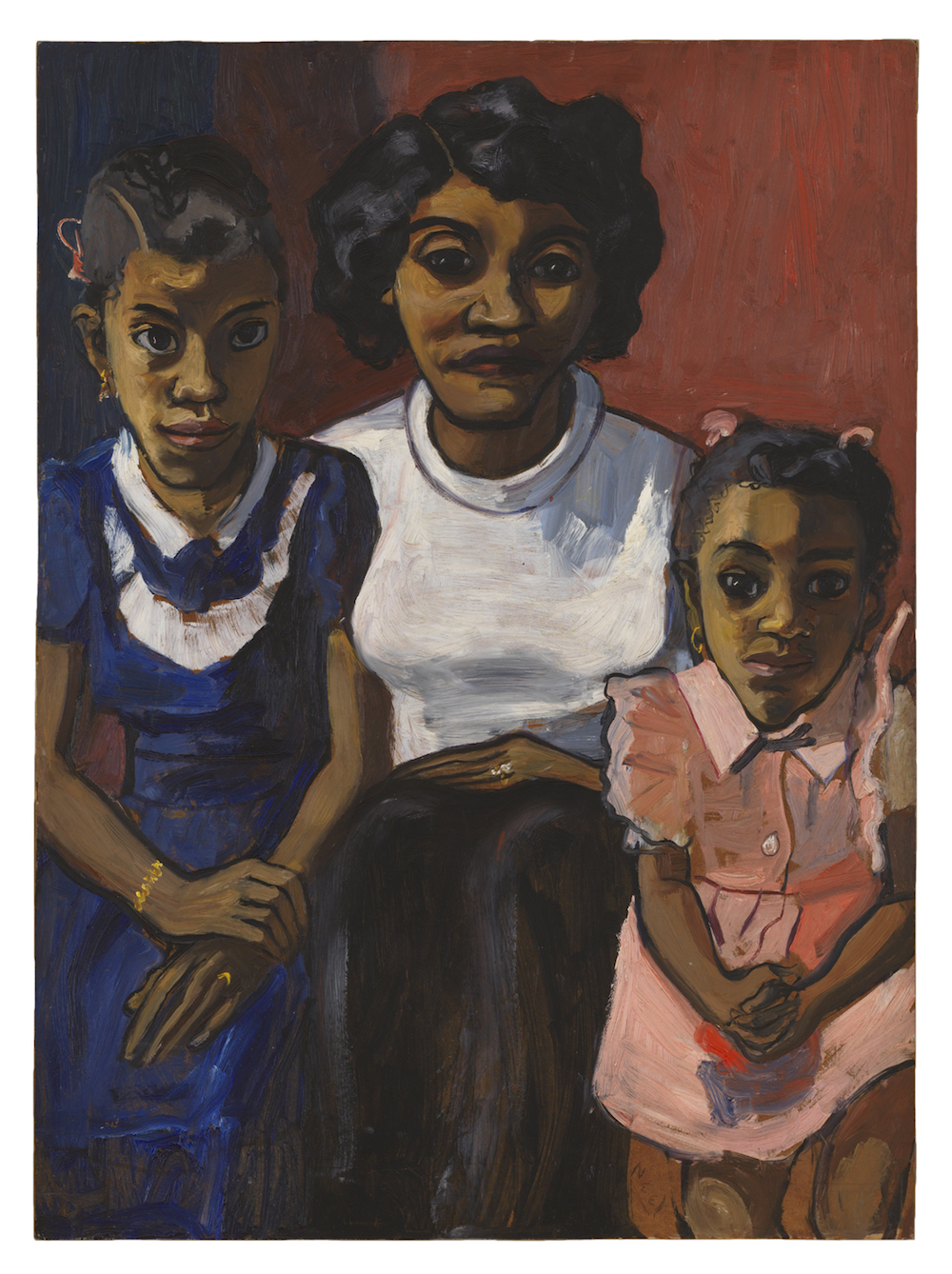
Alice Neel, “Black Spanish-American Family,” 1950. Private collection, Chicago. © The Estate of Alice Neel. Courtesy David Zwirner, New York/London and Victoria Miro, London.
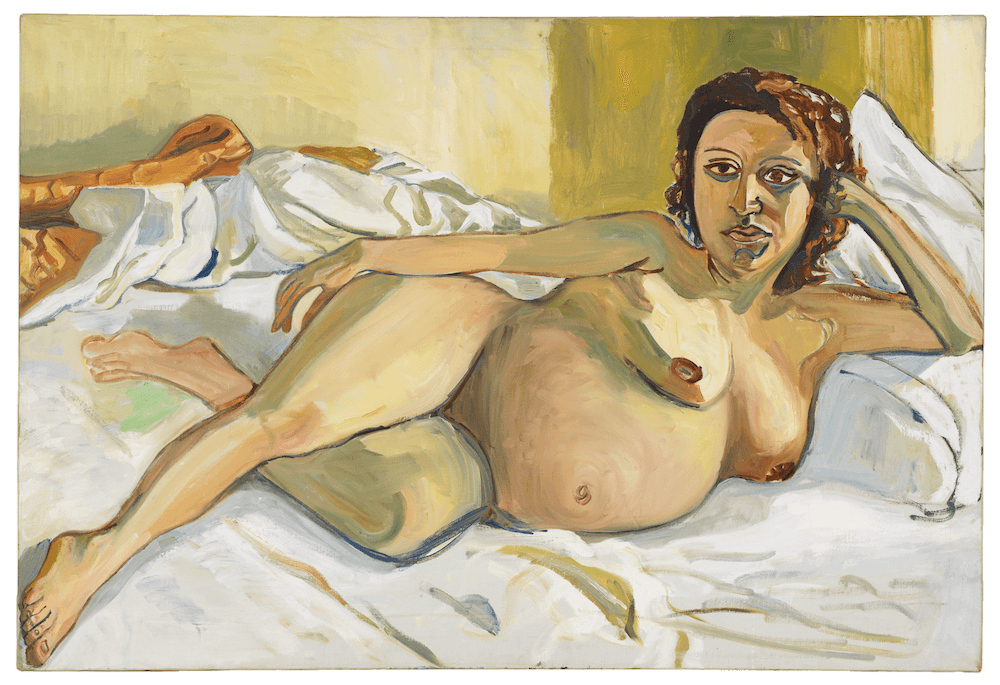
Alice Neel, “Pregnant Maria,” 1964. Private collection. © The Estate of Alice Neel. Courtesy David Zwirner, New York/London and Victoria Miro, London.
Thankfully we’ve made some progress since then, because there’s no question that Hilton Als’s contribution to Alice Neel, Uptown is integral to its impact. Als’s essays match and illuminate the immediacy and irresistibly direct communication of Neel’s work. The exhibition, in fact, offers a corrective of its own: against too much caution in the form of political correctness, which Als said, in an interview with the Paris Review last year, “has done a lot to obscure the ways in which people are much more diverse in their interests than we give them credit for.” Als thinks a show like this—one that focuses expressly on Neel’s portraits of people of color—wouldn’t have been put on five years ago “because [people] would feel that we—the curators, the gallery—were essentializing the people in the pictures.”
“But in fact,” Als continues, “what we’re doing is talking about one of Alice’s major interests, meaning these communities, the people, the men. These were not blind points in her work, so they shouldn’t be obscured, and I always feel that Alice is taking as many risks as the subject, that what she sees is really all of the things that make up a person.”
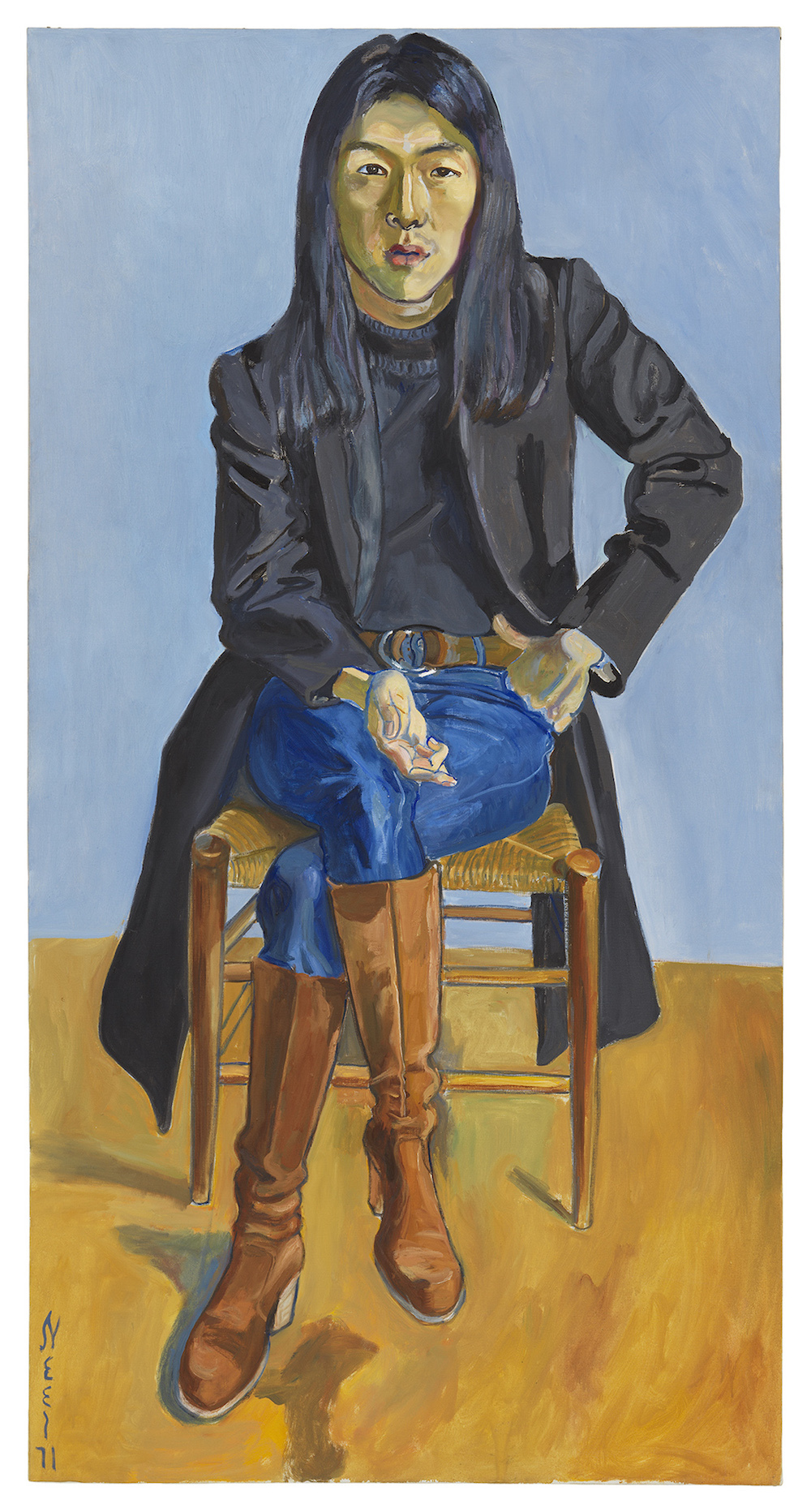
Alice Neel, “Ron Kajiwara,” 1971. © The Estate of Alice Neel. Courtesy David Zwirner, New York/London and Victoria Miro, London.
Neel herself never essentialized; each portrait was an exchange of energy between her and the sitter that happened anew each time. Always more interested in individuals than in types, Neel painted the immigrants, outsiders, and activists around her because she believed that art was duty-bound to represent the real social relations under which contemporary life was lived.
Later in the Paris Review interview, Als says that Neel “wasn’t afraid of race. She just wasn’t.” Maybe this is because Neel saw race for what it was—a category that justified the marginalization and oppression of some, and endowed power and privilege to others. But Neel wasn’t afraid of much. To be a realist in an age of abstraction—which sought the pure “essence” of painting and eschewed references to the outside world—was tantamount to professional suicide, at least among the institutions and collectors of her day. (Neel’s empathy with the communist movement and the immigrant working class also didn’t help.) She painted gay couples long before it was legal to be homosexual, black activists, supporters of the women’s movement, transgender people, and pregnant women whose bodies didn’t match the canonical ideal. Neel saw a world that was a product of man rather than a product of nature, a world in which lines drawn along class, race, and gender perpetuated inequality and permitted suffering. It was the artist’s duty to see that world as clearly as possible, to scrutinize and reflect, despite its ugliness, the wonder of living in it at all.
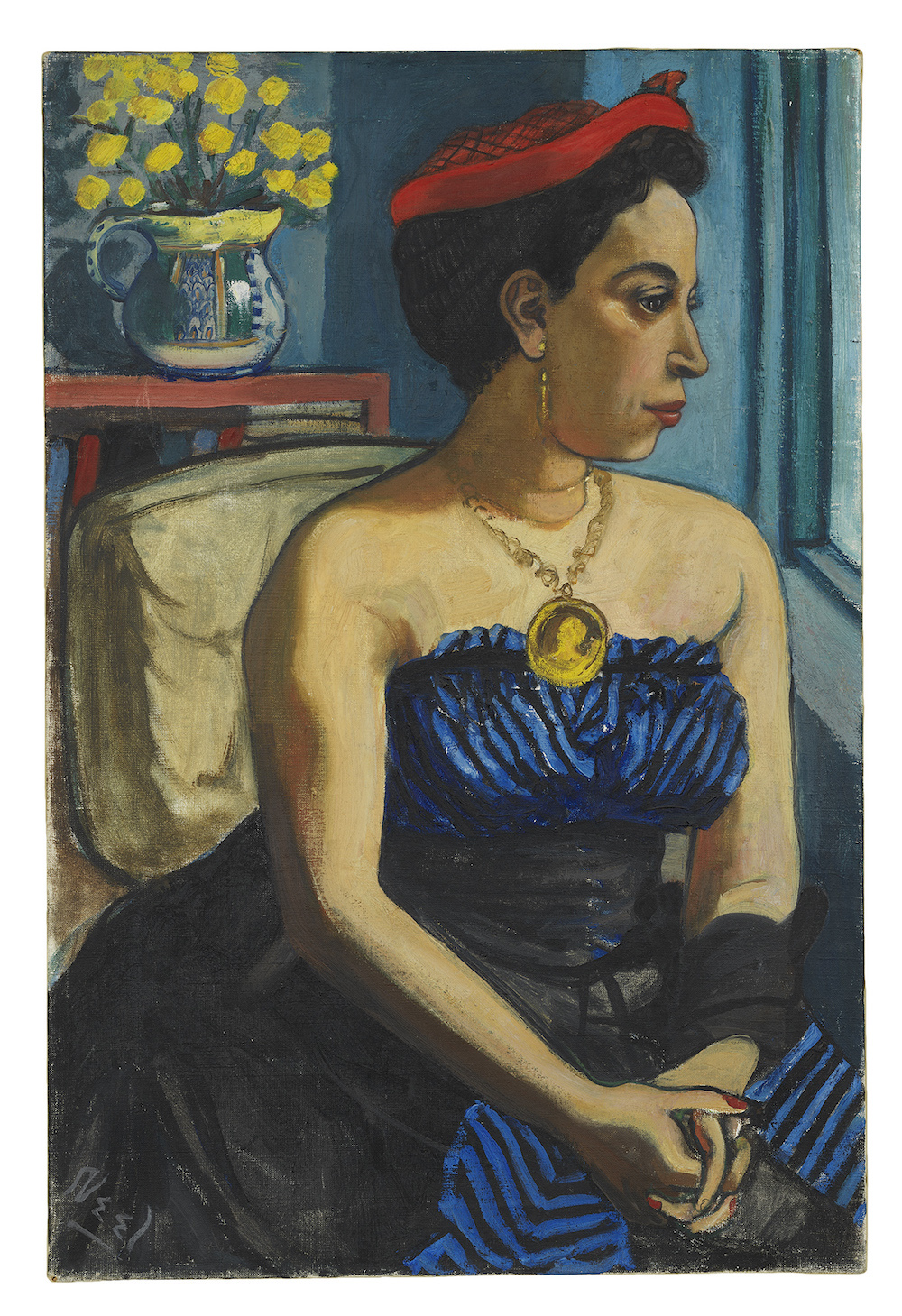
Alice Neel, “Alice Childress,” 1950. Collection of Art Berliner. © The Estate of Alice Neel. Courtesy David Zwirner, New York/London and Victoria Miro, London.
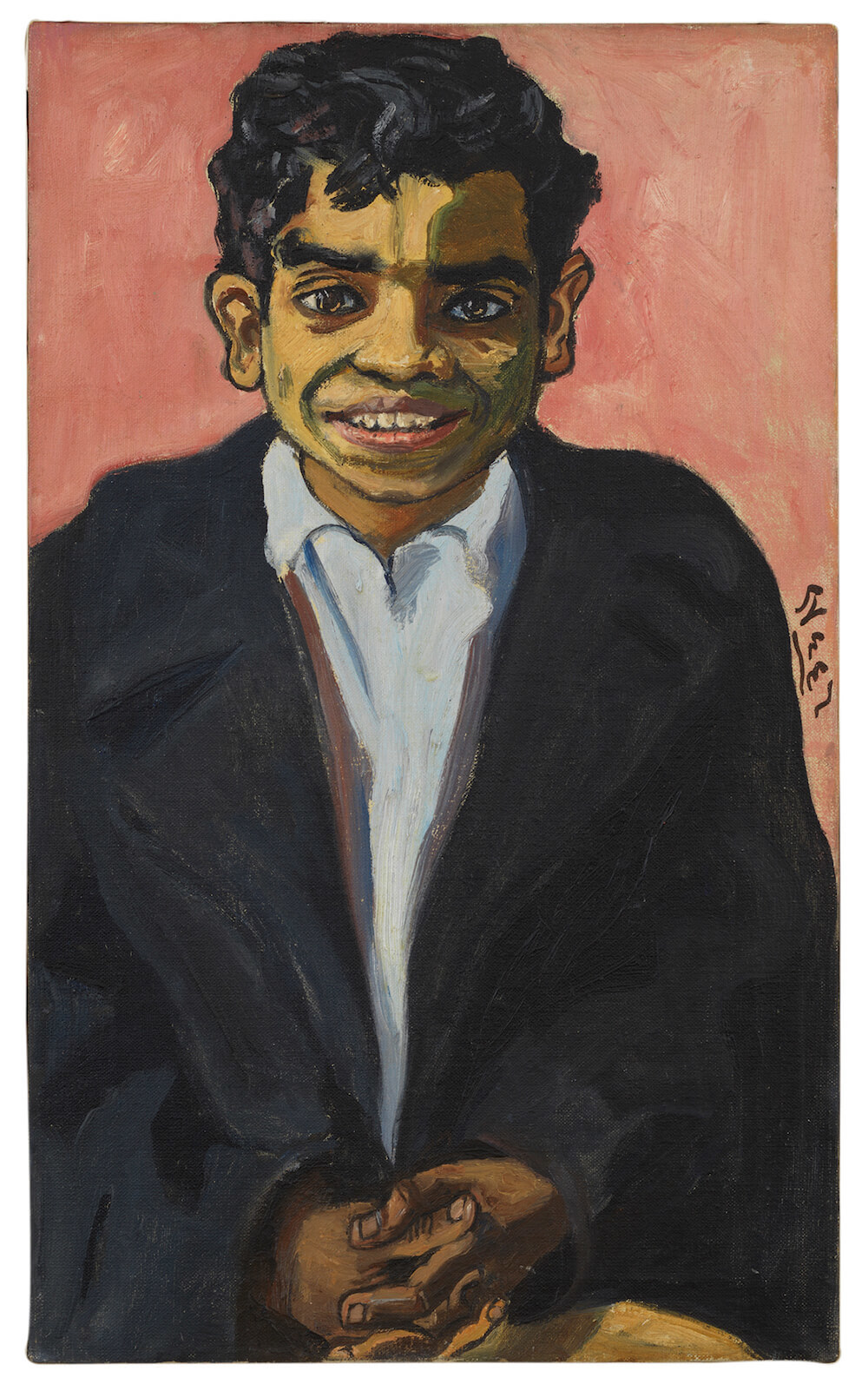
Alice Neel, “Georgie Arce,” 1955. Collection of William T. Hillman. © The Estate of Alice Neel. Courtesy David Zwirner, New York/London and Victoria Miro, London.
Alice Neel lived through the majority of the 20th century. She saw two world wars, the rise and fall of fascism, Vietnam and McCarthyism, a century that feared, rejected, and slaughtered the other. In a political climate that seems fueled by such fears, we cannot afford to be afraid of race—either on the right, where racial diversity is a threat rather than a lesson in what is shared, or on the left, where too often fear about getting our language right stops us from speaking for the people who don’t have the power to speak for themselves. Neel did that all her life. She didn’t wait, as Als points out, to see if it was “appropriate” to diversify or not.
For More Stories Like This, Sign Up for Our Newsletter
What is the political value of painting? “[Neel] knew that the first mark of being political was looking: seeing what was done to others in this world, and how the afflicted became afflicted, or what nowadays we might call disenfranchised,” Als writes in one of his essays on Neel. Neel had radical left-wing beliefs and an engaged social conscience, but her portraits deliver neither sermons nor sentimentality. People don’t need either. They need to be seen.
And at its best, painting slows you down. It conditions you to look actively, to search yourself for what you bring to an image. It sensitizes you to material, to duration, because paintings, like people, exist in time. Each portrait in Alice Neel, Uptown asks you to put something of yourself in it, in order to see what Neel saw and reenter a lived encounter. In this way art becomes an exercise in empathy. If looking is the first act of being political, it is our responsibility to cultivate nuance in how we look. Without nuance we lose the ability to see beyond simple categories—black and white, male and female, left and right—and risk failing to recognize the essential singularity that in the end, is one thing we all have in common.
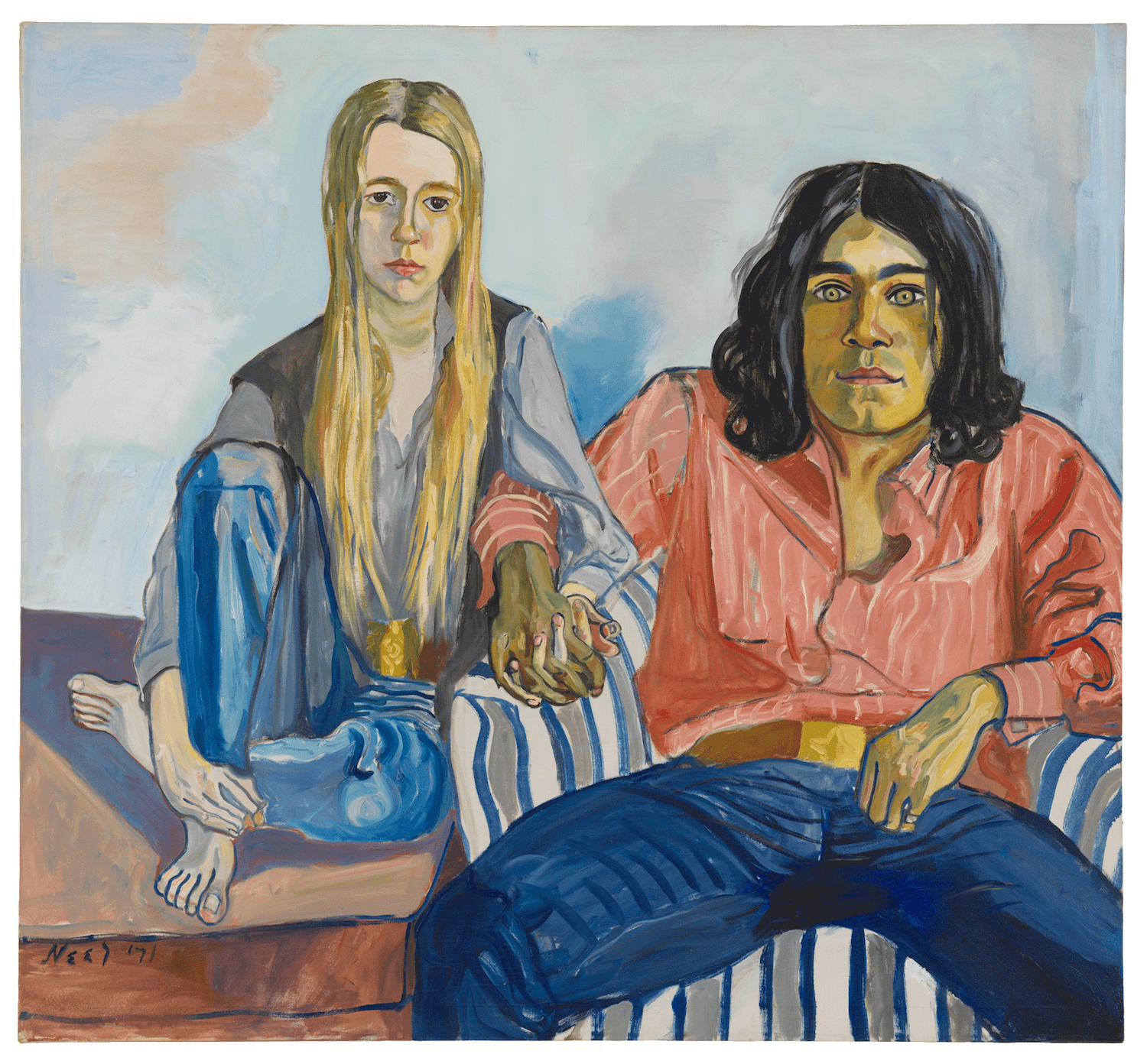
Alice Neel, “Ian and Mary,” 1971. © The Estate of Alice Neel. Courtesy David Zwirner, New York/London and Victoria Miro, London.
More
From VICE
-

-

Photo: Brunomartinsimagens / Getty Images


